Gender Norms, Lack Of New Age Skills Threaten To Derail Teenage Indian Girls’ Aspirations
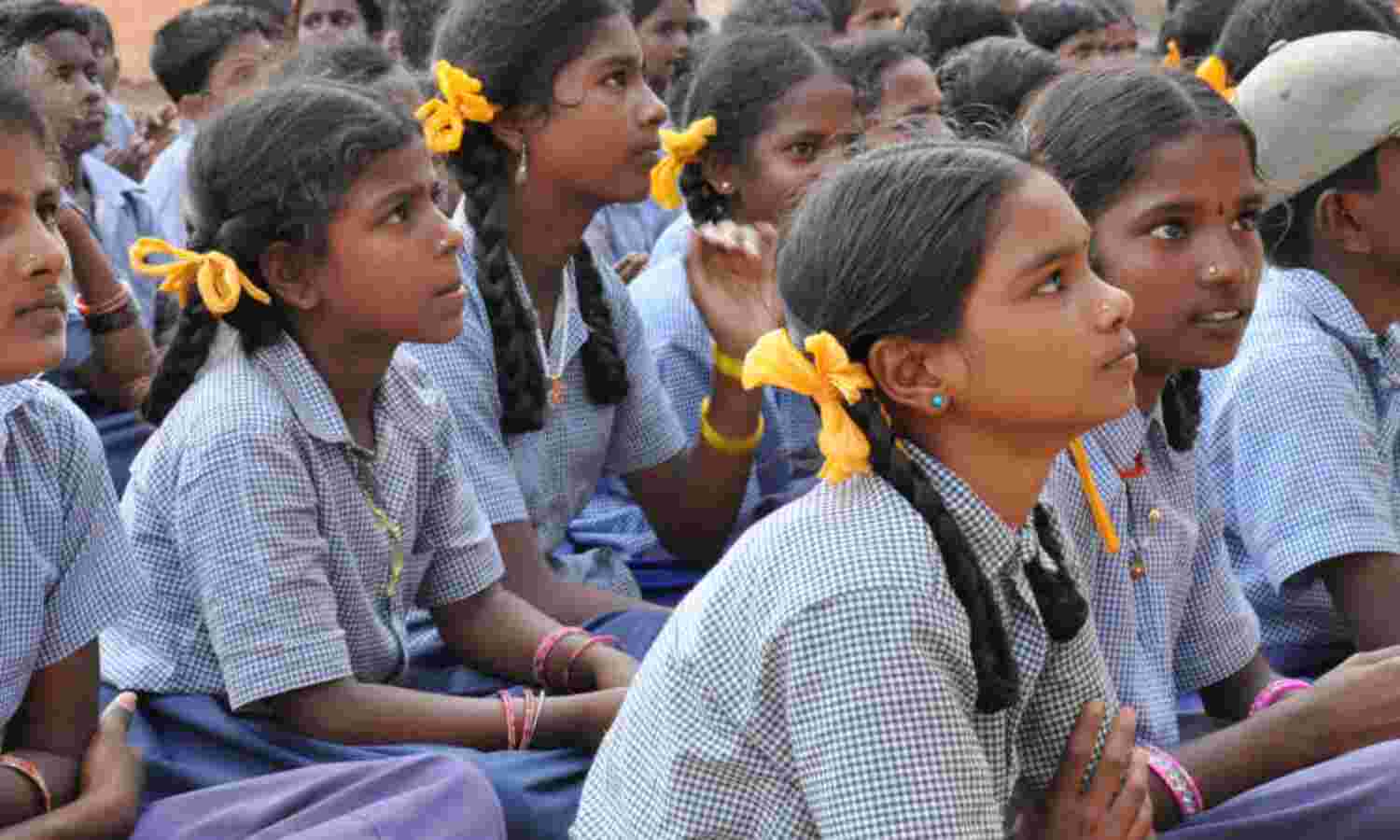
Mumbai: Every fifth teenage Indian girl is currently not studying, dropouts increase with increase in age, nearly every second teenage Indian girl believes boys have better opportunities to pursue education and work, and only one in five believes that boys can do as much household work as themselves.
These are some of the findings of a new survey report, the Teen Age Girls report (or the TAG report), released by Nanhi Kali, a project by the Naandi Foundation, which works with adolescent girls.
Even as the aspirations of teenage girls soar--seven in 10 teenage Indian girls want to finish graduation, three in four have a specific career path in mind, and nearly three in four do not want to marry before the age of 21, as we reported in the first part of this series--their current status in society and at home has not significantly changed and most struggle with a variety of what the survey calls "new age skills", such as travelling alone, using a smartphone, typing out a document on a computer in English and asking for directions.
The survey asked girls aged 13-19 years questions on nine topics including educational and health status, basic life skills, agency and empowerment within and outside the home and aspirations.
In the second of this three-part series, we explore how their educational status, attitudes on empowerment and gender norms and new age skills play out against these aspirations. This is significant, at a time when 63.2 million of them are set to be first-time voters in 2019. The third part explains how their access to healthcare and sanitation is crucial in a country where every second teenage girl is anaemic.
1 in 5 teenage Indian girls not currently studying, dropouts increase with age
Teenage girls make up 6.6% (80 million) of India’s populace--equivalent to the population of Turkey--and education helps them find employment, achieve aspirations, be healthier and reduce poverty.
Yet, as more girls strive for better opportunities, they are challenged by lagging gender parity and the inability to complete secondary education.
One in five teenage Indian girls, as we said, is not currently studying, the data show.
Among the states, Andhra Pradesh, Kerala, Telangana and West Bengal recorded the highest percentage of girls currently studying at 100% each. Madhya Pradesh and Uttar Pradesh, with only 64% girls currently studying, have fared the worst.
While 92.3% girls aged 13 are currently studying, this drops to 65.5% by age 19, the survey showed.
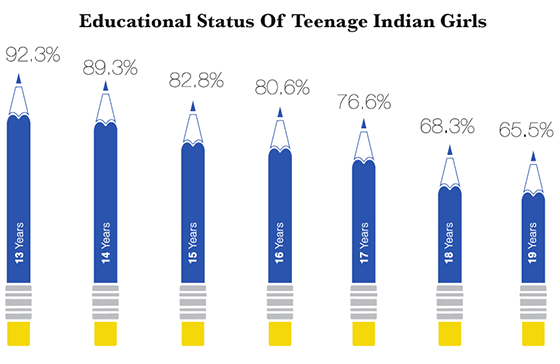
Source: Teen Age Girls Report, Naandi Foundation
Investing in girls--a society-based solution
“We’re working around the fact that investing in the girls is a good idea,” said Rohini Mukherjee, chief policy officer at Naandi Foundation.
An investment in attainment of quality education levels and development of ‘new age skills’--which the survey defines as skills important for efficient functioning in a deeply technology-oriented and fast-paced landscape--has far-reaching, long term benefits, the report noted.
The focus on girls in this age group is based on two implications: The potential of productivity held by an individual girl in contributing to the labour force, and the development of the children she might birth.
Girls who study up to 12 or more years, till the age of 18, are less likely to have teenage pregnancies, less likely to have a shorter interval between children, and less likely to have more than two children during her lifetime, as IndiaSpend reported on January 22, 2018.
This delay in childbearing will significantly reduce India’s projected 2050 population of 1.7 billion by more than a quarter, as IndiaSpend reported on January 12, 2018.
Childbearing runs parallel with early marriage--which was noted as one of the prime reasons for girls dropping out from their schools--according to a 2017 study by International Centre for Research on Women (ICRW), a US-based non-profit organisation.
In all, 96% teenage Indian girls are unmarried, the survey showed. About 73% girls said they would prefer to get married at or after 21 years of age, complementing the aspiration of the 70% who wish to graduate or sit for competitive exams.
“Every extra year spent in school increases the income earned by a girl by no less than 10%-20%,” said the TAG report. “The returns are higher, upto 15%-25%, on secondary education.”
Women were also seen to reinvest 90% of their income in their families. Hence, increasing incomes of women have also proven to lift entire families and communities out of poverty, the report said.
Higher levels of education also foster higher expectations of standards of living. Self-sufficiency, or the ability of providing for oneself, is higher after a secondary or tertiary-level (college) because the income earned increases.
Food security then posits itself as an offshoot as women with a secondary and tertiary level education are less likely to say that they don’t have enough money to buy food versus women with primary education or less, according to this July 2018 World Bank report.
The same report also points to an increase in the knowledge and conversation surrounding AIDS and HIV and the decision-making ability about one’s own healthcare by one-fifth, nationally.
Women’s knowledge of HIV/AIDS grew from the level of 8% with no schooling to 39% with twelve or more years of schooling, as per data in the National Family Health Survey, 2015-16.
The gender norms and perception battle: 45% teenage Indian girls said boys have better opportunities
Gender norms appear to play a role in the dropouts: About 45% teenage Indian girls said they believe that boys in their community get more opportunities to pursue education and employment than they do; only 20% thought men/boys in their community can do as much as housework as they do, data show.
The figures were slightly better in urban areas compared to rural areas.
While 46.5% girls in rural areas said boys in their community have better opportunities to pursue education, 41.9% said so in urban areas.
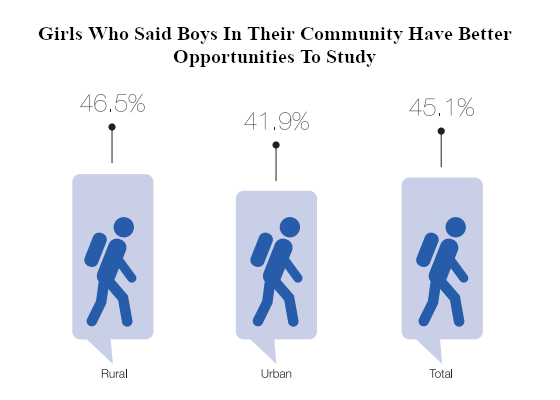
Source: Teen Age Girls Report, Naandi Foundation
A similar pattern of responses was noted when 45.5% girls in rural areas said boys get more opportunities to do jobs than women did. Among their urban counterparts, 43% indicated the same.
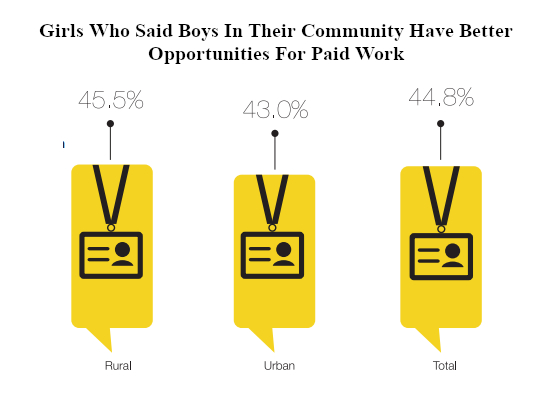
Source: Teen Age Girls Report, Naandi Foundation
While 18.6% girls in rural areas said boys in their community can do as much household work as they did, 23.8% girls urban areas said so.
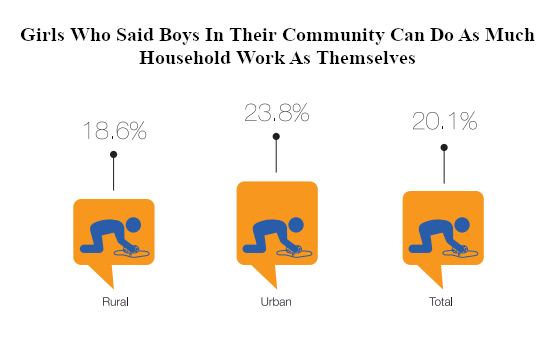
Source: Teen Age Girls Report, Naandi Foundation
New age skills for a new age woman
Keeping in mind the evolving lifestyles and the demand for a skill-set that helps execute both professional and personal goals of security, independence and self-reliability, the survey envisioned 10 new age skills.
As many as 91% girls can receive and make calls using a mobile phone, the survey found.
About half the girls surveyed (48%) said they can go to a police station and file a complaint, similar to the percentage of girls (52%) who said they can travel alone for a journey for four or more hours.
Digital literacy in English (the ability to make a document on laptop/computer) at 23% as well as access to social media (27%) and internet (30%) fared the lowest among the ten skills.
Digital access and connectivity have been touted to be a ‘gamechanger’ in helping the marginalised break intergenerational cycles of poverty, according to this 2017 report by United Nations Children’s Fund (UNICEF).
However, digital access was seen to be a dividing line as millions in need are actually unable to access it. Referencing the presence of a gender gap in digital access, the UNICEF report said that less than one-third of internet users in India are women.
Among the girls surveyed, 59.6% said they had between up to five new age skills, with a higher percentage among 13- to 15-year olds (66.4%). Meanwhile, 40.4% girls said they had six or more new age skills--though this was to be seen mostly among 16- to 19-year olds (46.9%).
This is the second of a three-part series on India’s teenage girls. You can read the first part here.
Next: Why Health & Sanitation Are Crucial To Teenage Indian Girls Realising Their Aspirations
(Chhetri, a graduate of Lady Shri Ram College for women, is an intern with IndiaSpend.)
We welcome feedback. Please write to respond@indiaspend.org. We reserve the right to edit responses for language and grammar.


